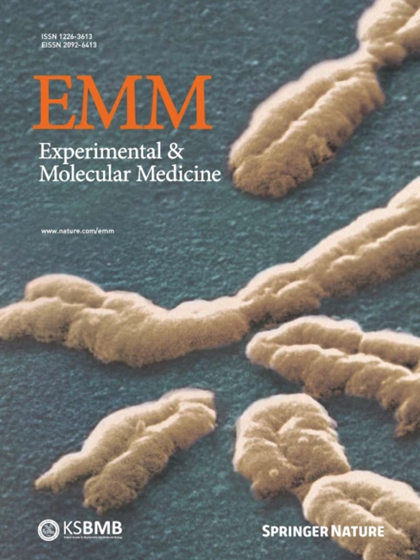Metabolic reprogramming in hepatocellular carcinoma: mechanisms and therapeutic implications
IF 9.5
2区 医学
Q1 BIOCHEMISTRY & MOLECULAR BIOLOGY
引用次数: 0
Abstract
Hepatocellular carcinoma features extensive metabolic reprogramming. This includes alterations in major biochemical pathways such as glycolysis, the pentose phosphate pathway, amino acid metabolism and fatty acid metabolism. Moreover, there is a complex interplay among these altered pathways, particularly involving acetyl-CoA (coenzyme-A) metabolism and redox homeostasis, which in turn influences reprogramming of other metabolic pathways. Understanding these metabolic changes and their interactions with cellular signaling pathways offers potential strategies for the targeted treatment of hepatocellular carcinoma and improved patient outcomes. This review explores the specific metabolic alterations observed in hepatocellular carcinoma and highlights their roles in the progression of the disease. Cancer cells often change their metabolism to support rapid growth. This study examines how liver cancer, specifically hepatocellular carcinoma (HCC), alters its metabolism and explores potential treatments. The authors focus on how HCC cells use glucose, amino acids and fatty acids differently from normal cells. HCC cells rely heavily on glycolysis even when oxygen is present, a phenomenon known as the Warburg effect. They also activate the pentose phosphate pathway to produce molecules needed for growth and survival. Additionally, HCC cells depend on certain amino acids such as glutamine and serine for building blocks and energy. This study highlights that targeting these altered metabolic pathways could be a promising strategy for treating HCC. In conclusion, understanding these metabolic changes in HCC can lead to new treatment approaches. This summary was initially drafted using artificial intelligence, then revised and fact-checked by the author.

肝细胞癌的代谢重编程:机制和治疗意义。
肝细胞癌具有广泛的代谢重编程。这包括糖酵解、戊糖磷酸途径、氨基酸代谢和脂肪酸代谢等主要生化途径的改变。此外,这些改变的途径之间存在复杂的相互作用,特别是涉及乙酰辅酶a(辅酶a)代谢和氧化还原稳态,这反过来影响其他代谢途径的重编程。了解这些代谢变化及其与细胞信号通路的相互作用,为肝细胞癌的靶向治疗和改善患者预后提供了潜在的策略。这篇综述探讨了在肝细胞癌中观察到的特定代谢改变,并强调了它们在疾病进展中的作用。
本文章由计算机程序翻译,如有差异,请以英文原文为准。
求助全文
约1分钟内获得全文
求助全文
来源期刊

Experimental and Molecular Medicine
医学-生化与分子生物学
CiteScore
19.50
自引率
0.80%
发文量
166
审稿时长
3 months
期刊介绍:
Experimental & Molecular Medicine (EMM) stands as Korea's pioneering biochemistry journal, established in 1964 and rejuvenated in 1996 as an Open Access, fully peer-reviewed international journal. Dedicated to advancing translational research and showcasing recent breakthroughs in the biomedical realm, EMM invites submissions encompassing genetic, molecular, and cellular studies of human physiology and diseases. Emphasizing the correlation between experimental and translational research and enhanced clinical benefits, the journal actively encourages contributions employing specific molecular tools. Welcoming studies that bridge basic discoveries with clinical relevance, alongside articles demonstrating clear in vivo significance and novelty, Experimental & Molecular Medicine proudly serves as an open-access, online-only repository of cutting-edge medical research.
 求助内容:
求助内容: 应助结果提醒方式:
应助结果提醒方式:


